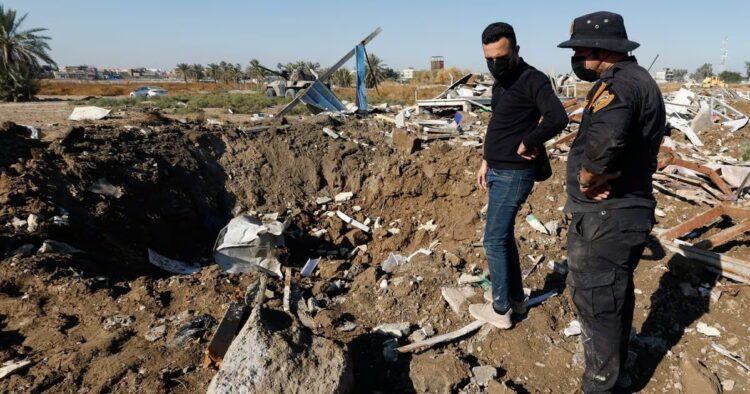In response to a weekend attack on an Iraqi air base that left U.S. forces wounded, the United States carried out strikes in Iraq against three facilities connected to Iran-backed militia. The Pentagon revealed that U.S. troops in Iraq and Syria have faced around 150 attacks by Iran-aligned militants since the Israel-Gaza conflict began in October.
The recent attack on Iraq’s Ain al-Asad air base resulted in four U.S. personnel sustaining traumatic brain injuries from ballistic missiles and rockets fired by Iranian-backed militants. U.S. Defense Secretary Lloyd Austin stated that the strikes on three facilities were “necessary and proportionate” in response to a series of escalating attacks by Iranian-sponsored militias against U.S. and Coalition personnel in Iraq and Syria.
The attacks on U.S. forces are perceived as retaliation for the country’s support of Israel in its conflict with the Iran-backed Palestinian militant group Hamas. Additionally, the conflict has extended beyond the region, with U.S. forces targeting Houthi targets in response to their attacks on ships in the Red Sea.
As of now, the U.S. maintains approximately 900 troops in Syria and 2,500 in Iraq. These troops work to advise and assist local forces, aiming to prevent the resurgence of the Islamic State, which had seized significant parts of both countries in 2014 before being defeated.
Iraqi Prime Minister Mohammed Shia al-Sudani’s office has expressed intentions to evict U.S. forces following a U.S. drone strike in Baghdad earlier this month. The strike, condemned by the Iraqi government, targeted a militia leader responsible for recent attacks on U.S. personnel. However, the Pentagon asserts that it has not been formally notified of any plans to end the U.S. troop presence in Iraq, highlighting that U.S. troops are deployed at the invitation of the government in Baghdad.

















Comments